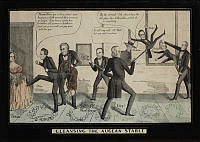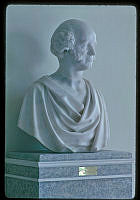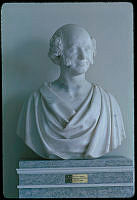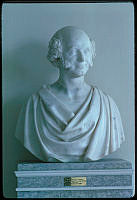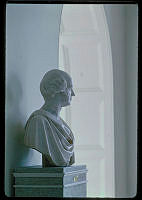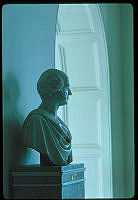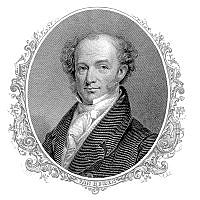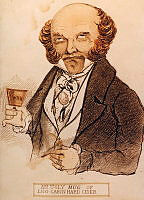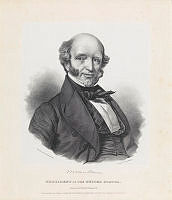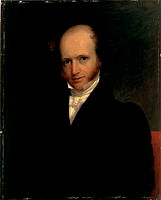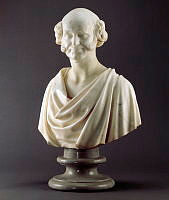Martin Van Buren, Unhappy, White House Collection
This stipple drawing of President Martin Van Buren wsa created by David Claypool Johnston from around 1840. This is a political cartoon referencing the 1840 presidential election as President Van Buren sought reelection. The initials of "WHH" on the cup refer to William Henry Harrison and the text on the bottom of the image states, "An Ugly Mug of Log Cabin Hard Cider." The log cabin hard cider referred to Harrison, President Van Buren's opponent during the election, who was presented to the American public as a man from rustic beginnings in contrast to Van Buren's wealthier background.
